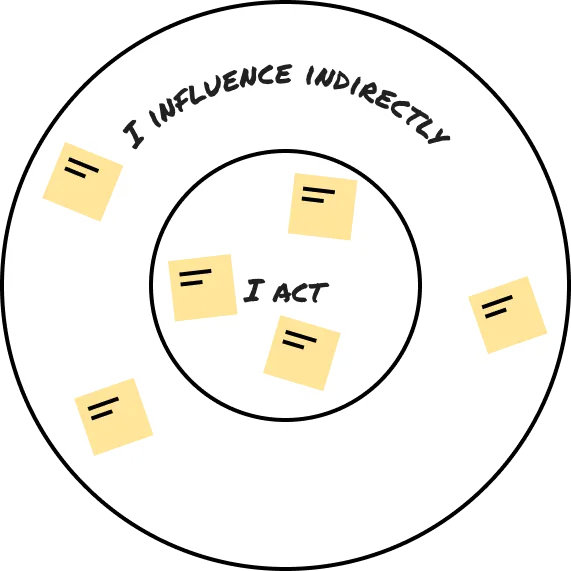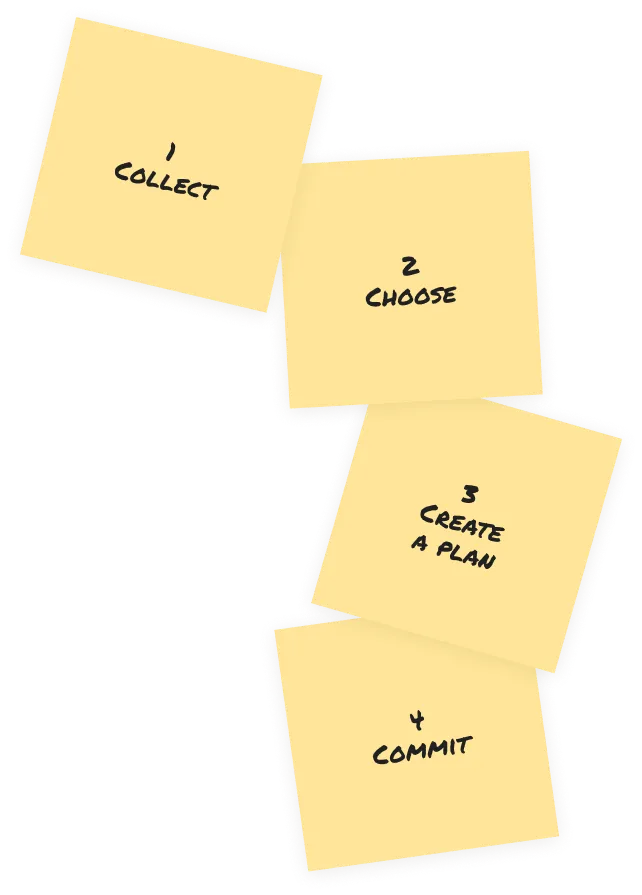You're staring at your screen. The client wants revisions by EOD. Your PM is asking for three different versions. And somewhere in the back of your mind, that voice whispers: "This could be better if I just had more time."Sound familiar? Welcome to the designer's paradox. You're expected to move fast like a startup and think deep like a strategist. Do both. Do them perfectly. Do them yesterday.
Here's the thing though: the best designers aren't the fastest ones. They're not the deepest thinkers either. They're the ones who stay calm under pressure, make smart trade-offs, and design with clarity even when the clock is ticking. They've learned something crucial: it's not about choosing between speed and depth. It's about finding the sweet spot where both can coexist.
This guide will show you exactly how to get there. You'll learn to identify where pressure really comes from, master the art of strategic trade-offs, and develop techniques to stay composed when everything feels chaotic. By the end, you'll be designing with confidence, delivering work you're proud to ship, and maybe even enjoying the process along the way.
Understanding pressure: The perfect storm hitting your workflow
Pressure isn't random. It's a perfect storm of forces colliding at exactly the wrong moment. But here's the good news: when you can see these forces clearly, you can start working with them instead of against them.
Let's break down the three main sources of design pressure and what you can actually do about each one.
The stuff inside you: Internal pressure
First up are the voices in your head. You know the ones. They're loud, they're persistent, and they're probably talking right now.
Perfectionism is the big one. It's that nagging feeling that every pixel needs to be perfect before you can call something done. Perfectionism tricks you into thinking that "good enough" is never actually good enough. The reality? Perfectionism often leads to diminishing returns. That extra hour you spend fine-tuning a button probably won't make or break the user experience.
Speed guilt hits when you feel bad for moving fast. You worry that quick decisions mean shallow thinking. But speed doesn't automatically equal poor quality. Sometimes the first instinct is the right one, especially when you have solid design fundamentals backing you up.
Depth guilt works in reverse. You feel guilty for taking time to think things through, especially when everyone around you seems to be moving at lightspeed. But depth isn't procrastination in disguise. Strategic thinking prevents costly mistakes down the line.
To manage internal pressure, start by recognizing these patterns when they show up. When perfectionism kicks in, ask yourself: "Will this change meaningfully impact the user experience?" When speed or depth guilt appears, remind yourself that both have their place. The key is matching your approach to the situation at hand.
The stuff around you: External pressure
External pressures come from the world beyond your screen. They're real, they're often urgent, and they're usually outside your direct control.
Client demands can feel overwhelming, especially when they seem to change direction every few days. One week they want minimal, the next they want "more pop." The trick isn't to resist these changes but to get better at understanding what's driving them. Often, clients aren't changing their minds randomly. They're responding to their own pressures: market feedback, stakeholder input, or evolving business needs.
Market competition creates another layer of urgency. When competitors launch new features, the pressure to respond quickly intensifies. But here's what many designers miss: rushing to copy competitors often leads to mediocre solutions. Instead of reacting immediately, take a step back and ask what problem they're actually solving. Then find your own way to solve it better.
End-user expectations keep rising. Users expect faster load times, smoother interactions, and more intuitive interfaces. These aren't unreasonable demands, but they do require strategic thinking about where to invest your limited time and energy.
To handle external pressure effectively, focus on communication and expectation setting. When clients request changes, dig into the underlying need. When market pressures mount, advocate for strategic responses over reactive ones. When user expectations feel overwhelming, prioritize based on actual user research rather than assumptions.
The stuff built into the system: Organizational pressure
Organizational pressures are often the most frustrating because they feel systemic. These are the structural issues that make good design harder than it needs to be.
Process gaps create chaos. When there's no clear handoff process between design and development, or when feedback cycles are poorly defined, everyone ends up scrambling. The solution isn't to work around broken processes but to help fix them. Document what's not working and propose specific improvements.
Team culture shapes everything. In some organizations, design is seen as decoration rather than strategy. In others, designers are expected to work miracles with impossible timelines. Culture change takes time, but you can start influencing it through your own actions: share your design thinking, involve stakeholders in the process, and consistently deliver work that demonstrates design's strategic value.
Lack of alignment multiplies pressure exponentially. When different stakeholders have different expectations, designers often get caught in the middle. Combat this by creating alignment early and often. Run brief alignment sessions before starting new projects. Document decisions and share them widely.
The key to managing organizational pressure is understanding what you can control versus what you can influence indirectly. You can't single-handedly change company culture, but you can model better ways of working. You can't eliminate all process gaps overnight, but you can document problems and propose solutions.
Balancing speed and depth: The art of smart trade-offs
The speed versus depth dilemma isn't really a dilemma at all. It's a false choice that creates unnecessary stress. The real skill is learning when to go fast and when to go deep, then executing both with intention.
Here's what most designers get wrong: they think speed means cutting corners and depth means endless iteration. But smart designers know better. Speed can mean having strong fundamentals that let you move confidently. Depth can mean asking the right questions upfront to avoid costly pivots later.
Defining your design speeds
Think of design like driving. Sometimes you need to cruise on the highway. Sometimes you need to navigate slowly through a complex intersection. Both require skill, but they require different approaches.
Speed mode is about delivering fast, being responsive, staying lean. It's prioritizing momentum over polish. This is your MVP mindset: get something working in users' hands, learn from it, iterate quickly. Speed mode works best when you're exploring new territory, responding to urgent user needs, or working with well-established patterns.
Depth mode is about crafting thoughtfully, understanding problems completely, exploring multiple paths before choosing. It's rooted in research, systems thinking, and intentional decision-making. Depth mode makes sense when you're tackling complex user problems, establishing new design systems, or making decisions that will impact the product for months or years.
The magic happens when you can switch between these modes fluidly, matching your approach to what the situation actually requires.
The prioritization framework that actually works
Forget generic priority matrices. Here's a framework specifically designed for design decisions under pressure:
High impact, high urgency: This is your "drop everything" category. Usually involves user-blocking issues or major business-critical features. Go deep enough to understand the core problem, then move fast with proven patterns and solutions.
High impact, low urgency: This is where your best strategic work happens. You have time to research, explore alternatives, and craft thoughtful solutions. Invest depth here because these decisions will compound over time.
Low impact, high urgency: The trickiest category. Often these feel urgent but don't actually move the needle much. Speed is your friend here: use existing patterns, leverage your design system, and resist the urge to reinvent things.
Low impact, low urgency: Batch these together or delay them entirely. Don't let low-impact work consume time you could spend on high-impact problems.
The key insight: impact should drive your depth investment, while urgency should drive your timeline. High-impact work deserves deep thinking, whether it's urgent or not. High-urgency work needs fast execution, but only invest deep thinking if the impact justifies it.
Introducing: Tune, Lock, Cut
Working under pressure without a plan is like navigating a city without a map. You might get there eventually, but you'll waste time, energy, and sanity. That's why smart designers use frameworks to cut through the chaos.
Meet the Tune, Lock, Cut framework. It’s a simple system I developed to help you make sharp, strategic decisions when everything feels like a top priority.
TUNE: Energy and adaptability
TUNE is about recognizing what you can control versus what you need to flow with. This framework prevents you from burning energy fighting dynamics you can't change.
The Circle of Flow helps you visualize this. Draw two circles: "I Act" (things in your direct control) and "I Influence Indirectly" (things you can shape over time but can't directly control).
In your "I Act" circle: your craft quality, your communication style, your relationships with PMs and developers, your personal processes, and your professional boundaries. Focus most of your energy here because this is where you can create immediate impact.
In your "I Influence Indirectly" circle: leadership's design awareness, company-wide priorities, team culture, and organizational processes. You can't force changes here, but you can build trust, model better ways of working, and plant seeds that move the system in a healthier direction over time.
When pressure builds, ask yourself: "Is this an 'I Act' situation or an 'I Influence Indirectly' situation?" If it's the former, take immediate action. If it's the latter, think long-term and focus on building influence rather than forcing immediate change.
This framework prevents the common trap of fighting culture and team politics, which burns you out on things you can't control. Instead, you stay loose and focused under pressure, flowing with dynamics you can't change while maximizing impact where you can.

LOCK: Focus and prioritization
LOCK is about committing to what matters and letting go of everything else. When everything feels urgent, this framework helps you identify what's actually important.
The key insight: you can't do it all or please everyone. Trying to do everything means doing nothing particularly well. LOCK forces you to make strategic choices about where to invest your limited time and energy.
Start by collecting all the competing demands on your attention. Write them down - every feature request, every stakeholder concern, every optimization idea. Getting everything visible prevents important things from hiding in the mental chaos.
Next, choose what actually matters. Use the impact/urgency framework from earlier, but add a third dimension: alignment with core user needs and business goals. Something might feel urgent and seem impactful, but if it doesn't align with fundamental objectives, it's probably a distraction.
Create a plan that sequences your chosen priorities logically. Some work needs to happen before other work can begin. Some decisions unlock multiple downstream opportunities. Map out these dependencies so you can work efficiently rather than jumping randomly between tasks.
Finally, commit to your plan and communicate it clearly to stakeholders. This is often the hardest part because it means saying no to reasonable-sounding requests that don't fit your priorities. But commitment is what separates strategic designers from reactive ones.
When you're locked on to what matters, you stop chasing every request and sinking hours into work no one uses. Instead, you zero in on what really counts, say no to distractions without guilt, and pour depth into the work that makes a difference.

CUT: Reducing decisions and noise
CUT is about eliminating everything that doesn't contribute meaningfully to your goals. Take design systems, for instance. Every extra token, style variation, or component decision just slows things down and adds mental clutter.
This isn't about being minimalist for the sake of minimalism. It's about recognizing that complexity multiplies decision fatigue. The more choices you have to make, the slower you move and the more mental energy you consume on low-impact decisions.
Apply the CUT framework to your design system first. Audit your tokens, components, and patterns using these criteria:
Keep: High Impact, High Use - "If we removed it, would it slow us down?" These are your essential elements that get used frequently and contribute meaningfully to user experience.
Trim: Low Impact, Low Use - "If we removed it, would anyone even notice?" These are the variations you created "just in case" but that don't actually serve a clear purpose.
Watch Out: Pain Points in Handoff - "Where are we seeing 'junk in, junk out'?" These are elements that create confusion during development or QA, leading to inconsistent implementation.
Commit: Lean System Rules - "What can we do today to stay lean tomorrow?" These are the guidelines that prevent system bloat from returning.
The same principles apply to your design process. Cut unnecessary deliverables, eliminate redundant approval steps, and reduce the number of tools and files you need to manage. The goal is to remove friction so you can focus on what actually matters.
When you successfully apply CUT, you'll notice immediate improvements. You'll make faster decisions because you have fewer options to consider. Developers will deal with fewer changes because your system is more consistent. QA will run smoother because there's less complexity to test. And if you're using AI tools like Cursor, you'll avoid "junk in, junk out" problems because your inputs are cleaner.

Designing with clarity when the clock is ticking
Pressure will always be part of design work. Market conditions change, user needs evolve, and business priorities shift. The designers who thrive aren't the ones who avoid pressure - they're the ones who've learned to design with clarity even when the clock is ticking.
Remember the core insight from this guide: the best designers aren't necessarily the fastest or the deepest thinkers. They're the ones who can tune their energy to flow with unchangeable dynamics, lock their focus on what truly matters, and cut through the noise to make sharp decisions quickly.
The frameworks you've learned - TUNE, LOCK, and CUT - aren't just theoretical concepts. They're practical tools that work under real pressure with real deadlines and real stakeholders. Start applying them to your current projects, even in small ways. Notice which situations benefit from speed and which require depth. Practice identifying what's in your control versus what you need to influence indirectly.
Most importantly, remember that designing under pressure is a skill you can develop. Like any skill, it improves with deliberate practice. The next time a deadline gets moved up or requirements suddenly expand, don't panic. Take a breath, apply these frameworks, and design with clarity.
Your future self - and your stressed-out colleagues - will thank you for it. The design industry needs more people who can stay calm under pressure, make smart trade-offs, and deliver excellent work even when everything feels chaotic. Why not be one of them?
Ready to put these principles into practice on your next project? Start by identifying which framework addresses your biggest current pressure point, then implement it systematically. The clarity you gain will compound over time, making you not just a better designer under pressure, but a more strategic and confident designer overall.




